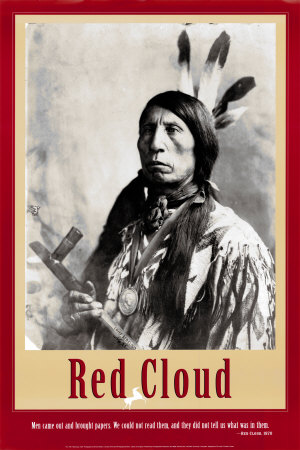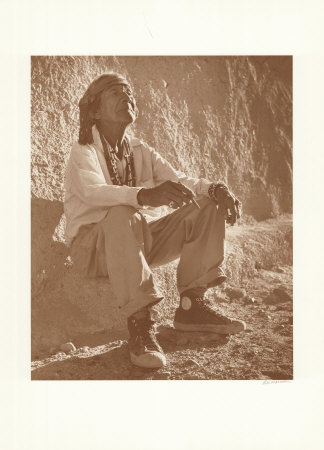Source: Public Domain Document Red Cloud gave this farewell address to the Lakota people on July 4, 1903, as he anticipated death approaching. Red CloudBuy This Poster At AllPosters.comFind out how you can use this image for FREE. “My sun is set. My day is done. Darkness is stealing over me. Before I lie down […]
Native American Tribes of the United States
Recent Posts
Red Cloud’s last words to his people
21 ViewsRed Cloud gave this farewell address to the Lakota people on July 4, 1903, as he anticipated death approaching.
“My sun is set. My day is done. Darkness is stealing over me. Before I lie down to rise no more, I will speak to my people.”
The Big Turtle’s War Party
21 ViewsSource: Pawnee Legend A turtle went on the warpath, and as he went along, he met Coyote, who said, “And where are you going Grandson?” Turtle said, “I am on the warpath.”
Jim Thorpe
22 ViewsJim Thorpe was an all round athlete who excelled at 11 different sports and the first native American to win the gold at the Olympics.
Source: WorldSong Entertainment PRNewswire/ Press Release The World Largest Concert, recently taped on November 1 & 2, 2001 at the Mormon Tabernacle in Salt Lake City, Utah, is led by the International Youth Choir of Utah, and features special guest Native American (Jicarilla Apache) singer-songwriter Matthew Andrae (WorldSong Entertainment Co-Founder), performing songs for peace. WASHINGTON, […]
Navajo words from the Origin Story
21 ViewsSource: Navajo Legend The construction of the conical hooghan is based upon the description of the hooghan of First Man related in the Origin Myth as told in Blessing Way [Hózhójí]. In this home, the poles were made of jewels, white shell [yoogaii], abalone [diichii], turquoise [doot’izhii] and jet [bááshzhinii].
The Hooghan of First Man
21 ViewsSource: Navajo Legend
The construction of the conical hooghan is based upon the description of the hooghan of First Man related in the Origin Myth as told in Blessing Way [Hózhójí]. In this home, the poles were made of jewels, white shell [yoogaii], abalone [diichii], turquoise [doot’izhii] and jet [bááshzhinii].
The show “Across Borders: Beadwork in Iroquois Life” at the George Gustav Heye Center of the Smithsonian National Museum of the American Indian lays to rest any idea that the tourist items were mostly made-for-the-trade tchotchkes.
Done with a vital design sense and extraordinary handcraft, they are part of a long line of Iroquois beadwork that goes back hundreds of years to a time when beads made from shells and bird bones were used instead of the tiny glass cylinders first brought to North America by European explorers in the 16th century.
AUTHOR: Rob McDonald Spokesman Review The Colville tribes completed a deal this week to purchase a veneer and lumber mill in Omak that closed 18 months ago. The reopening of the mill is expected to be a big boost to the Okanogan County economy, which is in dire straights. Colville Indian Power and Veneer will […]
High court to rule on peyote use
22 ViewsSource: Stephen Hunt
The Salt Lake Tribune
The Utah Supreme Court has agreed to decide whether non-American Indians can use peyote legally during religious ceremonies.
Scholars have long debated the origin of wampum development and use. Anthropologist Lynn Ceci theorized that marine shell beads made their appearance as early as 2500 BC, but the finished product of tubular wampum did not appear until about 200-1510 AD.
AUTHOR: Joe S Sando, Jemez Pueblo Six months of every year, the kachinas resided in the mountains to the west, where they could be seen as cloud banks gathering above the peaks. Then shortly after the winter solstice, they would return to the pueblo. Summoned in secret kiva ceremonies, the kachinas arrived through the sipapu […]
The kachinas
21 ViewsAUTHOR: Michael Lomatuway’ma, Hopi
Among all Pueblo people, religion plays a vital role in daily life. At the heart of religious life, particularly among western groups like the Hopi and Zuni, were the infinitely helpful kachinas-also sometimes called katsinas.
Since the Indian hunting horse had different duties than that of a war horse, a different set of symbols were used to aid the hunting horse and his rider. Designed to help the Indian hunter in finding the buffalo herd, many of these symbols also brought favor from the Great Spirit.
The Indian hunter’s wife had the privilege of painting his hunting horse, and if he was unmarried, that privilege was his mother’s.
Indian symbols used on the war horse
21 ViewsThe Indian war horse was highly regarded by its American Indian owner, who often honored and protected his war horse by painting tribal symbols upon the animal’s body.
While the symbols used and their meanings varied from tribe to tribe, there were some common symbols that were widely used on the Indian war horse. In this article, you will find explanations of some symbols which Indians used to decorate their war horses.






